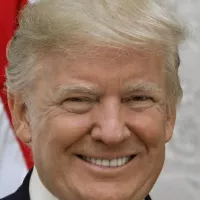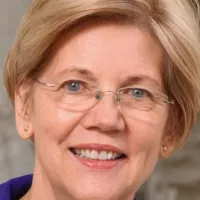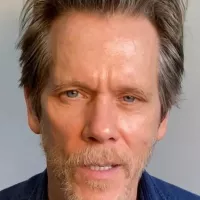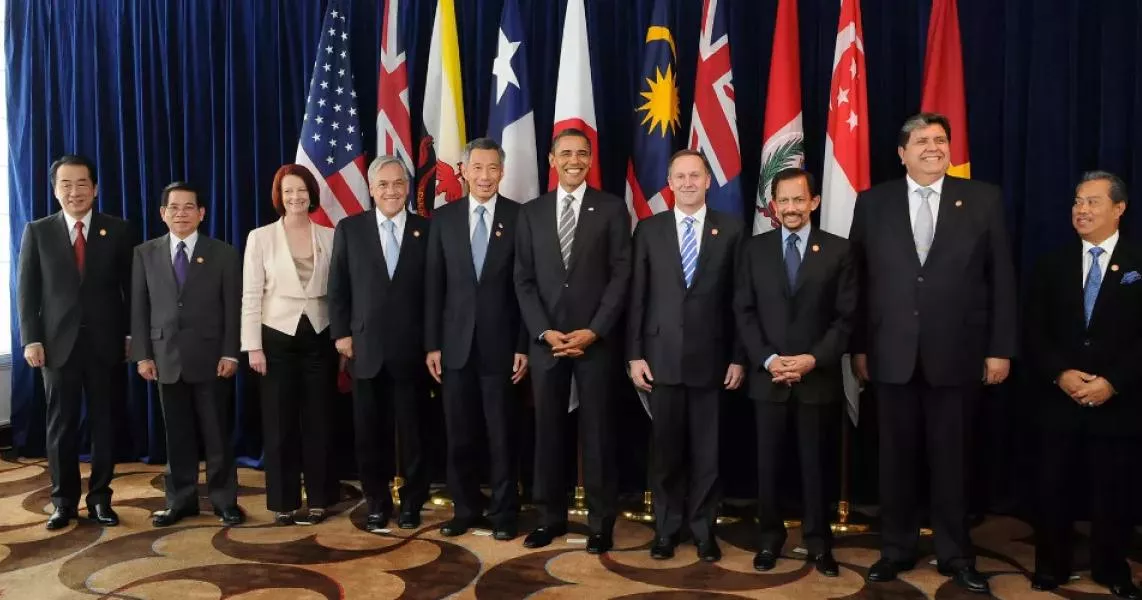The Trans-Pacific Partnership (TPP) was a proposed trade agreement among twelve Pacific Rim nations. Although signed in 2016, the TPP faced significant political opposition in the United States and was never ratified. President Trump formally withdrew the US from the agreement in 2017. Subsequently, the remaining countries established the Comprehensive and Progressive Agreement for Trans-Pacific Partnership, encompassing most TPP provisions, which came into effect in December 2018.
1974: Trade Act of 1974 Establishes Trade Advisory Committees
The Trade Act of 1974 led to the creation of trade advisory committees in the United States, aiming to provide input and expertise on trade matters. These committees have played a role in shaping U.S. trade policy over the years.
1975: Establishment of the Waitangi Tribunal
The Waitangi Tribunal, a standing commission of inquiry, was established in 1975 to investigate and address breaches of the Treaty of Waitangi by the New Zealand Crown.
1990: Regional Trade Growth High
Between 1990 and 2007, the Asia-Pacific region experienced robust regional trade growth, averaging about 10%.
1995: TPP Members Begin Signing Trade Agreements
Beginning in 1995, countries that would eventually become members of the TPP started signing various trade agreements, setting the stage for greater economic integration in the Asia-Pacific region.
September 1997: Japan Proposes Asian Monetary Fund
In September 1997, Japan attempted to increase its regional influence by proposing an Asian Monetary Fund (AMF). However, the initiative faced opposition from the U.S. and ultimately failed.
2005: Trans-Pacific Strategic Economic Partnership Agreement
The Trans-Pacific Strategic Economic Partnership Agreement (TPSEP), signed in 2005, marked the beginning of the TPP, laying the groundwork for broader trade liberalization in the Pacific Rim.
2005: Signing of the Trans-Pacific Strategic Economic Partnership Agreement (TPSEP)
The signing of the TPSEP in 2005 marked a significant step toward trade liberalization among the initial four member countries.
January 2006: TPSEP Enters into Force
The Trans-Pacific Strategic Economic Partnership Agreement (TPSEP), signed by Brunei, Chile, Singapore, and New Zealand, came into effect in January 2006.
2006: South Korea's Absence from Early TPP Stages
South Korea did not participate in the 2006 agreement that laid the groundwork for the TPP.
January 2008: US Joins TPP Discussions
The United States entered into discussions with the Pacific 4 (P4) countries in January 2008 to liberalize trade in financial services.
December 2010: South Korea Invited to TPP Negotiations
Following the successful conclusion of its free trade agreement with the United States, South Korea received an invitation to join the TPP negotiating rounds in December 2010.
2010: Regional Trade Growth Slows
Between 2010 and 2014, regional trade growth in the Asia-Pacific region slowed to around 5% on average, a significant decrease from the roughly 10% growth experienced between 1990 and 2007.
2010: Formal TPP Negotiations Begin
The year 2010 marked the beginning of formal negotiations for the Trans-Pacific Partnership (TPP) trade agreement.
December 2011: Criticism Arises Regarding Copyright and Patent Provisions
By December 2011, criticism mounted against the TPP's provisions related to patent and copyright enforcement. Critics argued that these provisions, as proposed by the United States, were overly restrictive, surpassing even those found in the Korea-US trade agreement and the Anti-Counterfeiting Trade Agreement (ACTA).
2011: Japan Establishes CJK FTA
In 2011, Japan, China, and South Korea established the CJK FTA, a cooperative trade agreement. This agreement was seen as a way for Japan to counter the growing influence of the TPP and promote its own economic interests in the region.
May 2012: Senator Wyden Introduces Bill to Increase Congressional Access to TPP Documents
In May 2012, US Senator Ron Wyden introduced a bill aimed at increasing transparency in the TPP negotiations. The bill, S. 3225, would have mandated the USTR to disclose TPP documents to all members of Congress, enhancing congressional oversight of the process.
2012: ECIPE Predicts TPP as a Threat to European Exporters
In 2012, the European Centre for International Political Economy (ECIPE) predicted that the TPP would pose a significant threat to European exporters, particularly in the agricultural sector.
2012: Calls for Transparency in TPP Negotiations; USTR Defends Confidentiality
The year 2012 saw growing calls for increased transparency in the TPP negotiations, with groups like Public Citizen's Global Trade Watch advocating for more openness. However, US Trade Representative Ron Kirk defended the need for confidentiality, arguing that it was essential for preserving negotiating leverage.
2013: China's Position on TPP and Response
In 2013, China, the largest economy in the Pacific Rim not involved in the TPP, saw the agreement as lacking sufficient incentives to join. This led China to accelerate its own trade initiatives in Asia.
2013: Stiglitz and Labor Unions Criticize TPP
In 2013, Nobel laureate economist Joseph Stiglitz criticized the TPP based on leaked drafts, arguing that it primarily served the interests of the wealthy. Organized labor in the US also voiced opposition during the TPP negotiations, claiming that it would disproportionately benefit corporations at the expense of workers in manufacturing and service industries. Think tanks like the Economic Policy Institute and the Center for Economic and Policy Research predicted potential job losses and wage stagnation in the US due to the TPP.
2013: WikiLeaks Publishes Leaked TPP Intellectual Property Chapter
In 2013, WikiLeaks released a leaked draft of the TPP's intellectual property chapter, highlighting the secrecy surrounding the agreement's negotiations.
2013: Sierra Club Raises Environmental Concerns about TPP
In 2013, during the TPP negotiations, Ilana Solomon, Sierra Club's director of responsible trade, voiced concerns that the agreement could negatively impact the climate and environment. Solomon argued that provisions granting new rights to corporations and impacting the fossil fuel industry could have significant consequences for climate, water, and land.
2013: EU and Japan Begin Free Trade Talks
In 2013, the European Union (EU) and Japan initiated discussions about a potential free trade agreement. This development signaled the EU's interest in pursuing trade deals with individual TPP member countries.
2013: Potential TPP Expansion and Trade Policy Challenges
Indonesia, Bangladesh, and India were interested in joining the TPP as of 2013, but many countries faced the need to reform their protectionist trade policies to qualify.
January 2014: Environmental Groups Criticize TPP Draft
In January 2014, following the release of a draft of the TPP's Environment Chapter, environmental organizations including the Natural Resources Defense Council and the World Wide Fund for Nature joined the Sierra Club in criticizing the agreement.
February 2014: Australian Public Health Association Highlights Potential Health and Economic Costs
In February 2014, the Australian Public Health Association (PHAA) released a statement emphasizing the potential negative health outcomes associated with the TPP and the subsequent economic burden these could impose. They raised concerns that the pursuit of economic gains through the TPP could come at the cost of public health.
2014: ECIPE Highlights Negative Impacts of TPP on Europe; Lamy Calls TPP "Old-Style"
By 2014, ECIPE argued that the TPP's impact on Europe would extend beyond agriculture, negatively affecting investment, productivity, and competitiveness. Pascal Lamy, former Director-General of the World Trade Organization, labeled the TPP as "the last of big old-style trade agreements".
2014: TPP Signatories Represent Significant Portion of Global GDP and Trade
By 2014, the countries that had signed the Trans-Pacific Partnership (TPP) collectively accounted for a substantial portion of the global economy, representing approximately 40% of global GDP and one-third of world trade, highlighting the potential economic significance of the agreement.
2014: Chomsky and Sanders Criticize TPP's Potential Impact on Workers
In 2014, Noam Chomsky, a linguist and political activist, cautioned that the TPP was designed to advance a neoliberal agenda, prioritizing corporate profits and potentially undermining workers' rights by fostering global competition. Senator Bernie Sanders (I-VT) echoed these concerns, arguing that trade deals like the TPP often harm working families while benefiting large corporations.
2014: Paul Krugman Questions the Case for TPP
In 2014, Nobel laureate economist Paul Krugman expressed his doubts about the TPP, stating that there was no compelling reason for the deal from either a global or national perspective.
January 2015: UK Foreign Secretary Calls TPP and RCEP "Potentially Important Liberalising Steps Forward"
In January 2015, Philip Hammond, the former Foreign Secretary of the United Kingdom, characterized both the TPP and the RCEP as "potentially important liberalising steps forward".
February 2015: US Lawmakers and Experts Voice Concerns about Access to Affordable Medicine
In February 2015, several US lawmakers, including Senator Bernie Sanders and Representatives Sander Levin, John Conyers, and others, expressed concerns about the TPP's potential to limit access to affordable medicine, particularly in developing countries like Vietnam. They argued that the agreement's provisions on intellectual property could lead to higher drug prices and limit the availability of generic alternatives.
May 2015: Claims of Secrecy and Limited Access in TPP Negotiations
In May 2015, Michael R. Wessel, a former commissioner on the U.S. Trade Deficit Review Commission, alleged that "cleared advisors" like him were restricted from publicly discussing their criticisms of the TPP's proposals and approaches. He claimed limited access to information, with only selected portions available under supervision and difficulties accessing up-to-date materials.
May 2015: Debate Erupts Over TPP's Impact on Drug Prices and Access
In May 2015, Nobel laureate Paul Krugman expressed concern that the TPP's tightening of patent laws would benefit corporations like pharmaceutical companies at the expense of consumers, particularly in developing countries. However, economist Walter Park argued that the impact of such provisions on drug prices and access was not clear-cut. He suggested that they could potentially lead to increased licensing, technology transfer, and new drug launches in developing countries. The USTR emphasized that the TPP aligned with the Doha Declaration, allowing for flexibility in patent rights to improve access to essential medicines.
May 2015: Debate Over TPP's Labor Standards and Enforcement
In May 2015, US Congressman Sander Levin raised concerns about the enforceability of the TPP's labor standards, citing Vietnam's willingness to meet them as a particular concern. Senator Elizabeth Warren also highlighted a gap between labor standards in past trade agreements and their actual enforcement. However, analysts at the Peterson Institute for International Economics argued that the TPP's combination of potential penalties and technical assistance could improve compliance.
June 2015: Malaysia Takes Steps Against Human Trafficking
In June 2015, Malaysia, under the influence of the TPP, took steps to address human trafficking. The country amended its laws to improve the treatment of trafficking victims, including providing better access to shelters, housing, and legal processes. They also focused on curbing human trafficking within the construction industry.
June 2015: Senator Rand Paul Opposes TPP Fast-Track over Secrecy Concerns
In June 2015, Senator Rand Paul (R-KY) voiced his opposition to the fast-tracking of the TPP's congressional ratification. He cited concerns about the trade agreement's lack of transparency as the basis for his opposition.
June 2015: Māori Leaders Challenge TPP's Compatibility with Treaty of Waitangi
In June 2015, prominent Māori figures, including Dr Papaarangi Reid, Moana Jackson, and others, submitted an urgent claim to the Waitangi Tribunal, alleging that the New Zealand Government's handling of the TPP negotiations violated the Treaty of Waitangi. They argued that the agreement's secrecy, lack of parliamentary consent, limited Māori involvement, and absence of legal obligation to assess its impact on the Treaty constituted breaches.
July 2015: Medical Experts Raise Concerns about TPP's Impact on Drug Access and Affordability
In July 2015, the New England Journal of Medicine published an editorial highlighting concerns raised by organizations like Médecins sans Frontières (Doctors Without Borders) and Oxfam about the potential negative impact of the TPP on access to affordable medicines. The editorial argued that provisions extending patent protection and data exclusivity could lead to higher drug prices, disproportionately affecting developing countries like India.
September 2015: TPP Finalized Amidst SDG Discussions
The TPP was finalized in September 2015, just a week after the announcement of the United Nations Sustainable Development Goals (SDGs), sparking debate about their potential interactions. Critics raised concerns about the TPP's compatibility with the SDGs, suggesting its provisions could have both positive and negative impacts on sustainable development.
October 2015: TPP Agreement Announced
Following 19 formal negotiation rounds and numerous meetings, the Trans-Pacific Partnership Agreement was announced in October 2015.
October 2015: Indonesia's Intention to Join TPP
Indonesian President Joko Widodo announced Indonesia's intention to join the TPP in October 2015.
November 2015: Columbia Professor Criticizes TPP's ISDS System
In November 2015, Columbia professor Jeffrey Sachs criticized the Investor-State Dispute Settlement (ISDS) system within the TPP, arguing that it grants excessive power to investors and undermines the judicial systems of member countries. He alleged that corporations have used ISDS to pressure governments into weakening regulations that negatively impact their profits.
November 2015: Doctors Without Borders Condemns TPP's Threat to Generic Medicines
In November 2015, Doctors Without Borders expressed strong concerns that the TPP's provisions on intellectual property could hinder access to affordable generic medicines, jeopardizing the health of millions. They criticized the agreement for potentially undermining public health safeguards and restricting access to essential medications.
November 2015: Draft of TPP Agreement Released
On November 5, 2015, a version of the Trans-Pacific Partnership (TPP) agreement, marked as "subject to legal review," was released to the public by the prospective member countries, providing greater transparency and insight into the negotiated terms.
2015: TPP's Unforeseen Benefit: Regulatory Cooperation During Bird Flu Outbreak
In 2015, even though the TPP hadn't been fully ratified, the agreement's framework for regulatory cooperation in agriculture proved beneficial during a bird flu outbreak. Chad P. Bown of the Peterson Institute for International Economics argued that this cooperation helped mitigate the impact on the US poultry industry by ensuring that TPP countries continued accepting US poultry exports.
2015: Copyright Term Extension Sparks Controversy in Japan
In 2015, the TPP's proposal to extend copyright terms, aligning them with the US law of "life of the author plus 70 years," faced significant opposition in Japan. This provision, along with another allowing legal action without formal complaints, had previously failed in Japan due to its controversial nature. A coalition of artists, academics, and activists urged Japanese negotiators to oppose these requirements.
2015: EU Unveils New Asia-Pacific Trade Strategy
The EU launched its "Trade for All" strategy in 2015, aiming to enhance trade relations with the Asia-Pacific region. This initiative further demonstrated the EU's efforts to strengthen ties with TPP countries independently.
2015: TPSEP Tariff Reduction Goal
The TPSEP set a goal of eliminating all trade tariffs between member countries by 2015.
January 2016: Mixed Reactions to TPP's Labor Provisions
In January 2016, the Peterson Institute for International Economics praised the TPP for including stronger labor rights protections than previous US trade agreements. However, Human Rights Watch, while acknowledging the significance of side agreements with Vietnam, Malaysia, and Brunei, expressed concerns about the enforcement of these provisions, noting that it could be subject to political and economic considerations.
January 2016: US National Association of Manufacturers Supports TPP
In January 2016, the US National Association of Manufacturers expressed its support for the TPP, arguing that without the agreement, the US would lose economic leadership in the region to other global powers.
February 2016: TPP Signing and Ratification Conditions
All twelve TPP participating countries signed the agreement in February 2016. The agreement's entry into force was contingent on ratification by all signatories within two years or by at least six states representing over 85% of the total GDP of all signatories.
February 2016: Senator Warren and The Washington Post Debate ISDS
In February 2016, Senator Elizabeth Warren publicly opposed the TPP, citing concerns about its ISDS provisions. She used the example of a French company suing Egypt for raising its minimum wage to illustrate her point. However, The Washington Post challenged Warren's characterization of the case, arguing that it was about enforcing a contract rather than undermining labor rights.
February 2016: UN Expert Criticizes TPP's Investor-State Dispute Settlement Mechanism
In February 2016, UN human rights expert Alfred de Zayas criticized the TPP's investor-state dispute settlement (ISDS) mechanism, arguing that it unfairly favored investors over states. He urged governments not to sign or ratify the agreement.
February 2016: Concerns Raised About ISDS and Corporate Power
In February 2016, researchers at the Columbia Center on Sustainable Investment and the Earth Institute, including Lise Johnson, Lisa Sachs, and Jeffrey Sachs, raised concerns about the TPP's ISDS provisions. They argued that these provisions could allow foreign corporations to sue governments over measures that negatively affect their profits, even if those measures are related to public health, national security, or environmental protection. Lori Wallach of Public Citizen's Global Trade Watch echoed these concerns.
February 2016: Trans-Pacific Partnership Agreement Signed
In February 2016, twelve Pacific Rim economies signed the Trans-Pacific Partnership Agreement, but it was never ratified in the United States.
February 2016: TPP Signed but not Ratified
Though the TPP was signed in February 2016, the US didn't ratify it.
May 2016: Waitangi Tribunal Supports Treaty Clause in TPP but Raises Concerns
The Waitangi Tribunal, in May 2016, supported the inclusion of a Treaty of Waitangi clause in the finalized TPP agreement. However, the Tribunal expressed apprehensions that a provision enabling foreign investors to sue the New Zealand Government might undermine the Crown's commitment to fulfilling its Treaty obligations.
July 2016: Debate Over TPP's Impact on US Influence in Asia
In July 2016, there was significant debate regarding the potential impact of the TPP on US influence in Asia. Some argued that the TPP's failure would diminish US influence and allow China to shape regional trade rules.
July 2016: Senator Warren Criticizes Corporate Influence on TPP Negotiations
Senator Elizabeth Warren (D-MA) alleged in July 2016 that corporations and industry groups held undue sway over U.S. trade negotiators. She pointed out that a significant majority of seats on U.S. trade advisory committees were occupied by corporate executives and lobbyists, suggesting their influence on the TPP's direction.
September 2016: Report Predicts Conflicts Between Trade and Climate Goals
In September 2016, the Institute for Agriculture and Trade Policy (IATP) released a report predicting that trade agreements like the TPP could clash with efforts to combat climate change. The report argued that the TPP's emphasis on trade expansion, particularly in extractive sectors, could hinder climate stabilization measures.
October 2016: Survey Shows Majority Support for TPP Among International Relations Scholars
A survey conducted in October 2016 revealed that the majority of international relations scholars supported the TPP. Out of 746 scholars surveyed, 71% expressed support, 18% opposed it, 9% were neutral, and 2% remained undecided.
November 2016: Trump Vows to Withdraw U.S. from TPP
During his 2016 presidential campaign, Donald Trump pledged to withdraw the U.S. from the TPP if elected. He argued that the agreement would harm the American economy and undermine its independence. This stance resonated with a segment of the electorate concerned about the perceived negative impacts of globalization and free trade agreements.
December 2016: Japan's House of Councillors Approves TPP
On December 9, 2016, Japan's House of Councillors passed a resolution to participate in the TPP, marking a significant step towards ratification.
2016: Study Suggests TPP's Potential Impact on Future Trade Agreements
A 2016 study conducted by political scientists at the University of Maryland suggested that the TPP had the potential to significantly shape future trade cooperation and agreements if it became standard legal text.
2016: Study Finds TPP Text Resembles Earlier U.S. Agreements
A 2016 study revealed that the text of the Trans-Pacific Partnership (TPP) closely resembled earlier trade agreements established by the United States, suggesting a continuation of existing trade policy principles and objectives.
2016: Cambodia's Interest in TPP
Cambodia also announced its interest in joining the TPP in 2016 and started examining its feasibility.
2016: Trump and Sanders Criticize TPP During 2016 Presidential Campaign
During the 2016 US presidential campaign, both Donald Trump and Bernie Sanders expressed criticisms of the TPP. Trump characterized the agreement as excessively long and complex, while Sanders argued that it went beyond a standard free trade agreement.
2016: Trump's Opposition to TPP Resonates with Voters
In 2016, Donald Trump's opposition to the Trans-Pacific Partnership (TPP) became a key part of his election platform, resonating with voters who felt left behind by globalization and free trade agreements.
2016: Sri Lanka Explores TPP Membership
Sri Lanka expressed interest in joining the TPP in 2016 and initiated studies to assess the feasibility.
January 2017: US Withdrawal from TPP
Newly elected US President Donald Trump formally withdrew the United States from the Trans-Pacific Partnership in January 2017, preventing its ratification.
January 2017: Japan Becomes First Country to Ratify TPP
On January 20, 2017, Japan became the first country to fully ratify the TPP, demonstrating its commitment to the agreement and its potential benefits.
January 2017: US Withdrawal and Revival Efforts
The United States withdrew from the TPP in January 2017. The remaining 11 countries decided to revive the agreement in May 2017.
January 2017: US Withdrawal Impacts TPP Ratification
The United States' withdrawal from the TPP in January 2017 effectively ended the possibility of the agreement coming into force.
May 2017: Efforts to Revive the TPP
In May 2017, the remaining 11 TPP countries agreed to revive the agreement after the US withdrawal.
May 2017: New Zealand Ratifies TPP
On May 11, 2017, New Zealand officially ratified the TPP agreement.
August 2017: Vietnam's Human Rights Record Declines After TPP Withdrawal
Following the Trump administration's decision to withdraw from the TPP in August 2017, reports emerged of Vietnam intensifying its repression of human rights. This development suggested that Vietnam's previous efforts to maintain a positive human rights record were partly motivated by its aspiration to join the TPP.
October 2017: Jacinda Ardern Becomes Prime Minister of New Zealand
Jacinda Ardern assumed office as New Zealand's Prime Minister in October 2017. Upon taking office, Ardern expressed her intention to renegotiate certain aspects of the TPP.
November 2017: Ardern Aims to Renegotiate TPP to Address Housing Concerns
In November 2017, Prime Minister Ardern announced her plan to renegotiate the TPP during an upcoming summit in Vietnam. Her primary objective was to secure the ability to ban foreign investors from purchasing existing homes in New Zealand, a measure aimed at addressing the country's housing affordability crisis.
2017: US Withdraws from TPP, Boosting RCEP
In 2017, President Donald Trump made the decision to withdraw the United States from the Trans-Pacific Partnership (TPP). This move served to strengthen China's alternative trade model, the Regional Comprehensive Economic Partnership (RCEP).
2017: Study Highlights TPP's High Score in Government Legislative Freedom
In 2017, a study found that the TPP scored favorably compared to other trade agreements in terms of preserving a government's ability to legislate and implement regulations across various public policy areas, addressing concerns about potential limitations on national sovereignty.
January 2018: Remaining TPP Countries Form CPTPP
In January 2018, the eleven remaining countries in the TPP negotiations, following the withdrawal of the United States, agreed on a revised version of the agreement known as the Comprehensive and Progressive Agreement for Trans-Pacific Partnership (CPTPP).
January 2018: Agreement Reached on Revised TPP
The 11 TPP countries, excluding the US, reached an agreement on a revised version of the TPP in January 2018.
February 2018: Deadline for TPP Ratification
February 2018 marked the deadline for TPP ratification for it to enter into force.
March 2018: Signing of the Comprehensive and Progressive Agreement for Trans-Pacific Partnership
March 2018 marked the signing of the revised TPP, now called the Comprehensive and Progressive Agreement for Trans-Pacific Partnership, by the 11 remaining countries.
April 2018: Potential US Return to TPP
President Trump suggested in April 2018 that the United States might consider rejoining the Trans-Pacific Partnership.
December 2018: CPTPP Enters into Force
After ratification by six countries, the Comprehensive and Progressive Agreement for Trans-Pacific Partnership (CPTPP) came into effect on December 30, 2018.
December 2018: Comprehensive and Progressive Agreement for Trans-Pacific Partnership Enters into Force
The Comprehensive and Progressive Agreement for Trans-Pacific Partnership, a new trade agreement incorporating most of the TPP's provisions, came into effect in December 2018.
2018: Study Reveals Partisan Divide on TPP in the U.S.
In 2018, a study revealed a significant partisan divide in how the American public perceived the TPP. Democrats and Independents were more likely to view the trade deal favorably, while Republicans tended to hold more negative opinions. The study highlighted the challenges in building bipartisan support for free trade agreements.
May 2020: China Expresses Openness to Joining CPTPP
In May 2020, Chinese Premier Li Keqiang signaled a positive and open stance towards China potentially joining the Comprehensive and Progressive Agreement for Trans-Pacific Partnership (CPTPP), the successor agreement to the TPP.
November 2020: China and 14 Asia-Pacific Nations Sign RCEP
In November 2020, China, along with fourteen other nations in the Asia-Pacific region, signed the Regional Comprehensive Economic Partnership (RCEP) trade agreement.
2020: Study Finds TPP Influenced China's Internal Reforms
A 2020 study concluded that the TPP indirectly pushed China to implement internal market-oriented reforms. The study argued that reform advocates within China used the TPP as leverage to justify domestic changes. Additionally, Chinese businesses anticipating exclusion from the agreement began investing in production facilities within TPP member states.
2020: Lack of Enthusiasm for TPP After 2020 Election
Following the 2020 U.S. presidential election, there was a noticeable lack of enthusiasm for the TPP among elected officials in the federal government, indicating a shift in the political landscape regarding free trade agreements.
February 2021: United Kingdom Applies to CPTPP
The United Kingdom submitted its application to join the CPTPP, the successor to the TPP, in February 2021.
July 2023: UK Joins CPTPP
On July 16, 2023, the United Kingdom officially signed the accession protocol to join the CPTPP, expanding the trade bloc's reach and signaling the UK's post-Brexit global trade ambitions.
2025: Tufts University Study Projects Job Losses Due to TPP
Researchers at Tufts University projected that the TPP would lead to job losses in several countries by 2025, including 450,000 jobs in the US, 75,000 in Japan, and 58,000 in Canada. The study estimated a total of 771,000 jobs lost and suggested that the positive economic effects for participating countries would be minimal.
2030: World Bank Projects Economic Growth and Wage Increases from TPP
The World Bank projected that the TPP, if ratified, could increase GDP in member countries by an average of 1.1% by 2030 and boost trade by 11%. They also anticipated real wage growth in all signatory nations, with varying degrees of impact. For instance, while the US would see modest increases for both unskilled and skilled workers, Vietnam could experience a significant rise in real wages for unskilled laborers due to shifts in labor-intensive industries.
2032: USITC Predicts Modest Economic Gains from TPP, Identifies Winners and Losers
The US International Trade Commission (USITC) estimated that the TPP would have a positive but relatively small impact on the US economy by 2032. They projected a 0.15% increase in real GDP, a 1% rise in exports, and the creation of 128,000 full-time jobs. However, the USITC also highlighted specific industries that would benefit, such as passenger cars and dairy production, and those that could face challenges, like auto parts and textiles. Vietnam was identified as a potential major beneficiary of the agreement.
2040: Canadian Analysis Shows GDP Growth with TPP, Losses Without
According to a report from Global Affairs Canada, ratifying the TPP could increase Canada's GDP by $4.3 billion by 2040 due to improved access to Asia-Pacific markets. Conversely, if Canada were to opt out while other TPP signatories ratified the agreement, the country could experience GDP losses estimated at $5.3 billion by 2040.
Mentioned in this timeline

Donald John Trump is an American politician media personality and...

Bernie Sanders is a prominent American politician currently serving as...

Elizabeth Warren is a prominent American politician and the senior...

Rand Paul is an American politician and ophthalmologist He has...

Jacinda Ardern served as the th Prime Minister of New...
India officially the Republic of India is a South Asian...
Trending

1 month ago Bradley Cooper directs Will Arnett and Laura Dern in the dramedy 'Is This Thing On?'

Steve Nash is a retired Canadian professional basketball player and former head coach of the Brooklyn Nets Renowned for his...

3 months ago Kevin Bacon's 'Tremors' revival, 'The Bondsman' series, and 90s monster movie acclaim.

9 months ago Billy Bob Thornton's 'Landman' Season 2 Starts Production; Demi Moore Returns.

James Jimmy G Garoppolo is a professional football quarterback currently playing for the Los Angeles Rams in the NFL He...

8 months ago George Kittle Discussing 49ers Extension Amidst Brock Purdy Contract Updates and NFL News
Popular

Stranger Things created by the Duffer Brothers is a popular...

XXXTentacion born Jahseh Dwayne Ricardo Onfroy was a controversial yet...
The Kennedy Center Honors are annual awards recognizing individuals and...
Turning Point USA TPUSA is an American nonprofit organization founded...

Candace Owens is an American conservative political commentator and author...

Bernie Sanders is a prominent American politician currently serving as...
